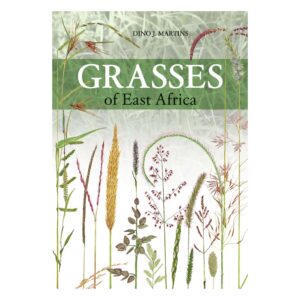Along the Kombo dyke that separates Lake Kanyaboli and the vast Yala Swamp in Misori, Siaya County, clumps of papyrus reeds dance to the gentle morning wind. Fishermen in traditional wooden canoes paddle through the calm lake waters, occasionally making stops to inspect their traps. Pied Kingfishers lay in wait to catch some fish. Many other birds, including Papyrus and Black-headed Gonoleks, forage through the papyrus. The place is a birder’s paradise. Local communities use papyrus reeds from the wetland to make baskets, mats and other products.
“As a weaver, my life revolves around Yala Swamp. It is here that I get the raw materials for my weaving. Together with other weavers, we make and sell products to sustain our livelihoods,” Mildred Apiyo, a resident of Bunyala says.
All this, however, hangs in the balance as Yala Swamp, the country’s largest freshwater wetland, faces another major treat: the conversion of the swamp to a sugarcane plantation.
“It is like everyone wants a piece of the swamp land. Private developers are scrambling for it. Communities who have lived here long have a right over it. The scramble for this resource is not anything that can be ignored,” Ibrahim Ogolla says.
For now, local communities are not so much concerned by the rampant fires to reclaim the edges of the swamp. The controversial allocation of 6,763.74 ha (16,713.57 acres) of the wetland by the National Land Commission (NLC) to a private investor – Lake Agro Kenya Ltd – is what has them worried.
“The move by the National Land Commission goes against our land rights. We depend on Yala Swamp for food, water, pasture, fuelwood and medicinal herbs. Sadly, our voices seem not to count,” says Ayiro Lwala, chairman of Yala Ecosystem Site Support Group (YESSG).
Yala Ecosystem Site Support Group is a community umbrella body working with Nature Kenya to conserve the Yala Swamp. The group also promotes sustainable livelihood initiatives to ease overdependence on the wetland for sustenance. Climate-smart agriculture, fish and poultry farming, beekeeping, basket weaving and ecotourism are some of the income-generating activities YESSG is promoting with Nature Kenya’s assistance.
“We are working closely with Nature Kenya to reduce pressure on Yala Swamp for natural resources by supporting nature-based enterprises. The decision by NLC to allocate large portions of the swamp to a private investor undermines our conservation efforts. The focus should be on protecting the swamp, not destroying it,” says Edwin Onyango, a member of YESSG based in Bunyala, Busia County.
To the local communities, the conversion of the swamp to a sugarcane plantation will put many of their livelihoods at risk, compromise their subsistence food production systems, and expose them to abject poverty.
Yala Swamp is one of Kenya’s important wetland ecosystems. The swamp is internationally recognized as a Key Biodiversity Area (KBA). It provides numerous essential environmental services and vital resources for over 250,000 people who live around it.
Besides being home to the endangered Sitatunga antelope and many papyrus-dependent birds, Yala Swamp is a refuge for cichlid fish that have become extinct in Lake Victoria.
YESSG and many other community organizations object to the Yala Swamp allocation by NLC and are asking the government to stop it.
“Yala communities will not accept to be impoverished at the expense of some rich greedy people. We will continue to fight for Yala Swamp’s conservation for the benefit of everyone,” concludes Thomas Achando, chairman of the Yala Swamp Indigenous and Community Conservation Areas.

